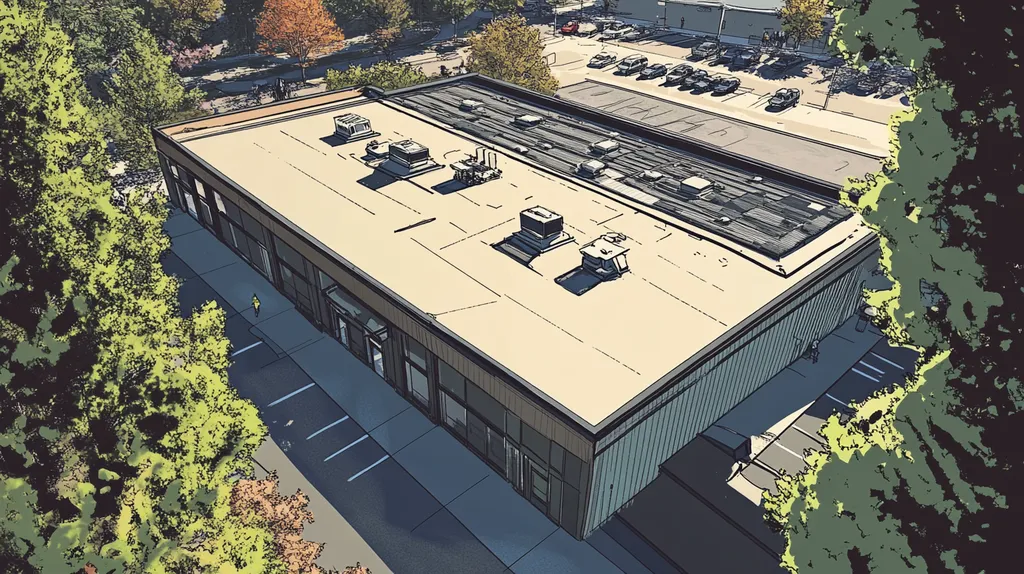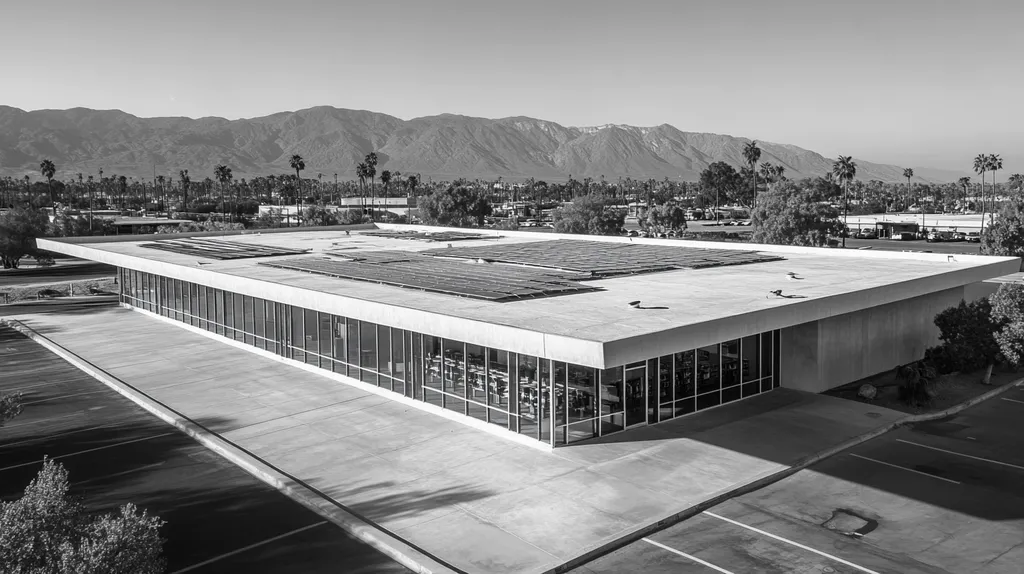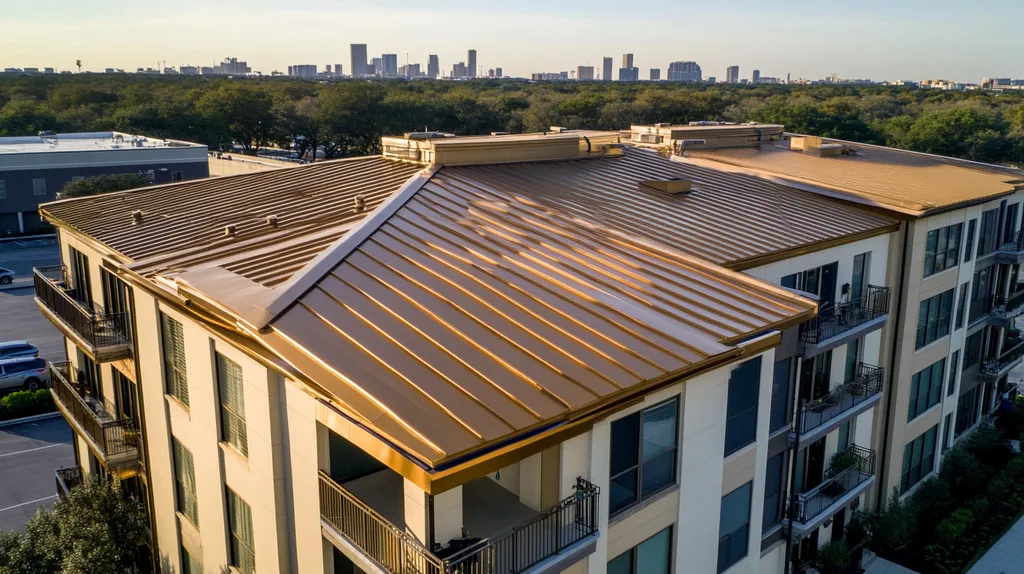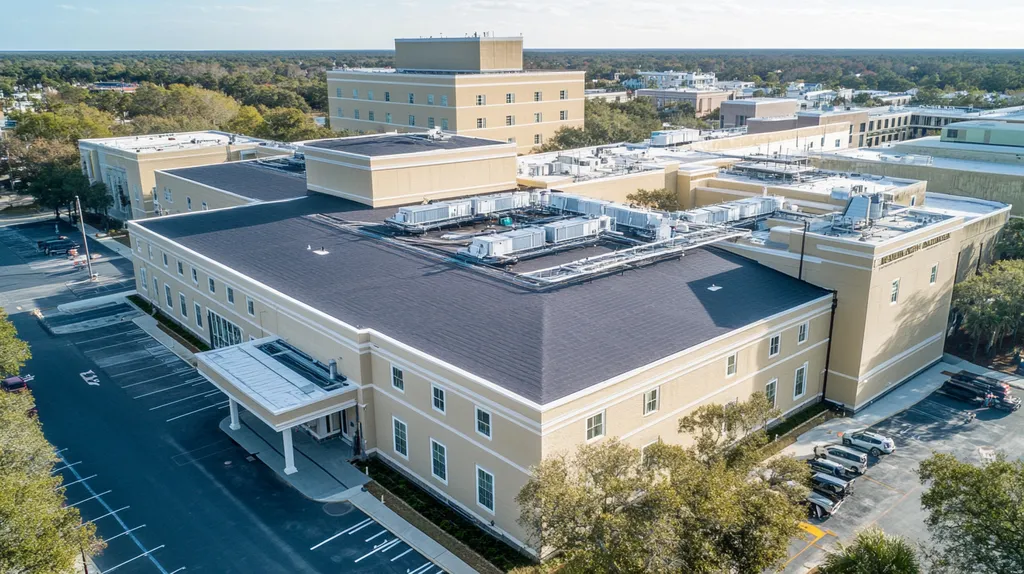Welcome to today’s Battle Royale featuring two roofing heavyweights: “TPO” in the east corner versus “EPDM” in the west!
Tonight’s showdown pits these contenders against each other across six punishing rounds designed to test every aspect of their performance for contaminants in old commercial roof waste.
At stake? Millions in potential costs, decades of building protection, and the critical performance demands of modern commercial and industrial facilities.
Our professional judging panel will evaluate each round on technical merit, real-world performance, and value delivery. After all six rounds, we’ll declare our ultimate champion.
Ladies and gentlemen, facility managers and building owners… it’s time to rumble!
ROUND 1: INITIAL COSTS & INSTALLATION
As commercial roofing costs continue to escalate, property owners face critical decisions that impact both immediate budgets and long-term environmental responsibility. The selection between TPO and EPDM systems has become increasingly complex, with material costs rising by double digits annually and disposal considerations taking center stage.
Recent studies revealing the environmental impact of roofing materials make these choices even more significant. Understanding the full scope of installation costs, complexity, and timeline implications can mean the difference between a successful project and a costly mistake.
Material Expenses
Commercial roofing materials can contribute significant amounts of metals and other contaminants into the environment over their lifetime, making material selection crucial for both cost and environmental impact. Recent studies have shown that commercial roofs can leach various metals, affecting both immediate installation decisions and long-term environmental considerations. (source: Washington Stormwater Center)
TPO membranes typically cost 15-20% less per square foot than EPDM, making them initially attractive for large commercial projects. The lower material cost stems from simpler manufacturing processes and more readily available raw materials.
EPDM’s higher upfront cost reflects its more robust composition and proven track record. While the initial investment is greater, the material’s durability and resistance to environmental degradation often justify the expense.
When comparing pure material costs, TPO’s lower price point gives it a clear ADVANTAGE.
Installation Complexity
Installation complexity directly impacts labor costs and project success rates. TPO installation requires specialized welding equipment and highly trained technicians, particularly for seam creation and flashing details.
The precision required for TPO installation can lead to increased labor hours and the potential for installation errors. Even minor mistakes during the heat-welding process can compromise the entire system’s integrity.
EPDM installation utilizes simpler techniques and requires less specialized equipment. The material’s flexibility makes it easier to work with around roof penetrations and irregular shapes.
Given its straightforward installation process and lower risk of installation errors, EPDM has a clear ADVANTAGE.
Project Timeline
Project duration significantly impacts business operations and overall costs. TPO installations typically require more time due to the precise nature of heat-welded seams and the need for optimal weather conditions.
Weather sensitivity can extend TPO installation timelines, as proper welding requires dry conditions and moderate temperatures. These requirements can lead to unexpected delays and scheduling complications.
EPDM installations generally progress more quickly due to simpler application methods and greater weather tolerance. The material’s flexibility allows for faster installation around roof penetrations and complex geometries.
With its more efficient installation process and fewer weather restrictions, EPDM has a clear ADVANTAGE.
ROUND 1 WINNER: EPDM
ROUND 2: DURABILITY & LIFESPAN
With commercial roof replacements costing upwards of $500,000 for large facilities, understanding long-term performance is crucial. Recent studies show that premature roof failures often stem from improper material selection rather than installation issues. Making an informed choice between TPO and EPDM can mean the difference between a roof lasting 15 years versus 30 years.
Weather Resistance
TPO membranes excel in reflecting UV radiation and resisting ozone damage. Their heat-welded seams create a monolithic surface that effectively sheds water and resists wind uplift, making them particularly suitable for hurricane-prone regions.
EPDM demonstrates exceptional flexibility across extreme temperature ranges, from -40°F to 140°F. This elasticity allows EPDM to expand and contract without compromising structural integrity, reducing the risk of tears and splits during thermal cycling.
While both materials utilize protective compounds to prevent degradation, these treatments can release copper and zinc into stormwater runoff during rain events, potentially harming aquatic ecosystems. (source: Washington Stormwater Center)
Given its superior resistance to UV radiation and enhanced weather protection, TPO claims the ADVANTAGE.
Longevity
TPO roofing systems typically last 15-20 years when properly maintained. Their performance can vary significantly based on membrane thickness and environmental conditions, with newer formulations showing improved resistance to heat aging and weathering.
EPDM membranes consistently demonstrate lifespans of 25-30 years, with some installations exceeding 35 years. Their simple molecular structure and robust chemical bonds provide remarkable stability against environmental degradation.
EPDM’s proven track record of longevity and reliable performance gives it a clear ADVANTAGE.
Maintenance Requirements
TPO roofs require minimal maintenance beyond routine inspections and basic cleaning. Their smooth surface resists dirt accumulation and makes repairs straightforward when needed.
EPDM systems need more frequent cleaning to prevent biological growth and maintain reflectivity. The material’s surface can accumulate dirt over time, potentially reducing its thermal performance and necessitating more intensive cleaning protocols.
With lower maintenance demands and simpler upkeep requirements, TPO earns the ADVANTAGE.
ROUND 2 WINNER: TPO
ROUND 3: PERFORMANCE FACTORS
As extreme weather events intensify and environmental regulations tighten, commercial property owners face mounting pressure to select roofing systems that deliver optimal performance while minimizing environmental impact. Recent data shows that poor material choices can lead to premature failures, causing not just financial strain but also contributing to landfill contamination.
Understanding how TPO and EPDM perform across key metrics has become essential for making environmentally responsible roofing decisions that protect both building assets and local ecosystems.
Environmental Impact
TPO roofing systems feature chemically inert materials that resist degradation without releasing harmful compounds. Their heat-welded seams create a monolithic surface that minimizes the need for chemical maintenance treatments.
EPDM systems, while durable, can require more frequent cleaning and treatment to maintain performance. These maintenance procedures often involve chemical cleaners and protective coatings that can release pollutants into stormwater discharge. (source: Washington Stormwater Center)
Given its lower environmental impact and reduced need for chemical treatments, TPO claims the ADVANTAGE.
Chemical Resistance
TPO membranes demonstrate excellent resistance to common industrial chemicals, acids, and bases. Their molecular structure remains stable when exposed to harsh environmental conditions, reducing the risk of material breakdown and contamination.
EPDM shows good chemical resistance but can be vulnerable to certain petroleum-based products and industrial solvents. This vulnerability may necessitate more frequent repairs and replacements in facilities with high chemical exposure.
Based on superior chemical resistance and stability, TPO earns the ADVANTAGE.
Physical Performance
TPO systems offer exceptional tear and puncture resistance, particularly in thicker membranes. Their reinforced construction helps prevent physical damage that could lead to premature replacement and waste generation.
EPDM demonstrates excellent flexibility but can be more susceptible to punctures and tears from falling debris or maintenance traffic. While repairs are possible, damaged sections often require complete replacement, contributing to construction waste.
With superior physical durability and reduced replacement needs, TPO secures the ADVANTAGE.
ROUND 3 WINNER: TPO
ROUND 4: MAINTENANCE REQUIREMENTS
Every year, commercial property owners spend millions addressing premature roof failures that could have been prevented through proper maintenance. The stakes are particularly high when considering that contaminated roofing materials entering landfills can leach harmful substances into groundwater for decades. Understanding maintenance requirements between TPO and EPDM systems has become crucial for both operational efficiency and environmental responsibility.
Routine Inspection Requirements
TPO roofing systems demand quarterly professional inspections to maintain warranty coverage. These inspections focus on seam integrity, membrane surface condition, and drainage system functionality.
The reflective surface of TPO requires regular cleaning to maintain its energy-efficient properties. Accumulated dirt and debris can significantly reduce solar reflectance, leading to increased cooling costs and accelerated aging.
EPDM systems typically need only bi-annual professional inspections. The material’s chemical stability and resistance to UV degradation result in fewer inspection points and simpler maintenance protocols.
With lower inspection frequency and simpler maintenance requirements, EPDM claims the ADVANTAGE.
Repair Complexity
TPO repairs often require specialized equipment and certified technicians. Heat-welding new material over damaged areas demands precise temperature control and expert execution to prevent future failure points.
Roofing materials can leach significant amounts of metals over their lifetime, making proper repair crucial for minimizing environmental impact. Improper repairs can accelerate this leaching process, particularly in areas with high rainfall. (source: Washington Stormwater Center)
EPDM repairs can often be completed using adhesive-based patches and liquid sealants. This simpler repair process reduces the risk of improper execution while maintaining membrane integrity.
Given its straightforward repair procedures and lower technical requirements, EPDM earns the ADVANTAGE.
Long-term Maintenance Costs
TPO systems require more frequent maintenance interventions as they age. Surface degradation and seam vulnerability typically increase after the first decade, necessitating more intensive maintenance protocols.
The cost of maintaining TPO roofs often escalates significantly in the latter half of their service life. This increase stems from more frequent repairs and the specialized nature of TPO maintenance requirements.
EPDM maintenance costs remain relatively stable throughout the membrane’s lifetime. The material’s inherent durability and simpler repair requirements result in more predictable long-term maintenance expenses.
With more consistent and lower long-term maintenance costs, EPDM secures the ADVANTAGE.
ROUND 4 WINNER: EPDM
ROUND 5: SUSTAINABILITY CREDENTIALS
As landfills struggle with hazardous materials from commercial roof removals, property owners face mounting pressure to choose sustainable roofing solutions. Recent EPA estimates suggest that roofing waste accounts for up to 40% of construction debris in landfills, with many older materials containing harmful contaminants that can leach into soil and groundwater for decades.
The choice between TPO and EPDM now carries implications far beyond immediate installation concerns, affecting everything from waste management protocols to long-term environmental impact. Understanding these materials’ sustainability profiles has become essential for responsible facility management.
Recyclability and Waste Management
TPO membranes offer significant advantages in recycling potential, with manufacturers operating established take-back programs. The material can be processed and repurposed into new roofing products, reducing landfill impact.
The chemical composition of TPO remains stable during recycling, minimizing the risk of contaminant release. This stability makes it particularly valuable for waste management facilities concerned about long-term environmental impact.
EPDM recycling capabilities vary significantly based on membrane composition and age. While some EPDM can be recycled, the process is more complex and less widely available than TPO recycling.
Given its superior recyclability and established recycling programs, TPO claims the ADVANTAGE.
Environmental Impact During Use
TPO’s highly reflective surface significantly reduces building cooling requirements, leading to lower energy consumption and reduced carbon emissions. The material’s smooth surface also minimizes the need for chemical cleaners during maintenance.
Regular maintenance of TPO roofs can be accomplished with simple soap and water, reducing the potential for harmful cleaning agents entering stormwater systems. Poor maintenance practices on any roof type can lead to pollutants contaminating stormwater discharge. (source: Washington Stormwater Center)
EPDM typically requires more intensive cleaning protocols and may need chemical treatments to maintain performance. These maintenance requirements can introduce additional pollutants into the environment over time.
With lower maintenance chemical usage and better energy efficiency, TPO earns the ADVANTAGE.
Manufacturing Footprint
TPO production involves energy-intensive processes and specialized materials. However, manufacturers have made significant strides in reducing production emissions and implementing closed-loop manufacturing systems.
Modern TPO formulations utilize fewer harmful additives than earlier versions, resulting in cleaner production processes and reduced environmental impact during manufacturing.
EPDM manufacturing requires less energy than TPO production and uses simpler raw materials. The production process generates fewer emissions and requires less specialized equipment.
With lower energy requirements and simpler production processes, EPDM secures the ADVANTAGE.
ROUND 5 WINNER: TPO
ROUND 6: SPECIALIZED APPLICATIONS
As commercial roofing technologies evolve, specialized applications present unique challenges for property owners. The wrong material choice can lead to premature failure, resulting in hazardous waste and contaminated runoff that impacts local watersheds for decades. Understanding how TPO and EPDM perform in specific conditions has become crucial for protecting both facilities and the environment.
Temperature Resistance
TPO membranes excel in high-temperature environments, maintaining their structural integrity up to 160°F. Their reflective surface helps reduce heat absorption, particularly beneficial in southern climates where extreme heat is common.
However, TPO can become brittle in extreme cold, potentially leading to stress cracks and premature failure. These failures often require complete replacement, contributing significantly to construction waste.
EPDM demonstrates remarkable flexibility across temperature extremes, from -40°F to 300°F. This exceptional range allows the material to expand and contract without compromising its integrity or releasing contaminants into the environment.
With superior performance across all temperature ranges, EPDM claims the ADVANTAGE.
Chemical Exposure
TPO membranes offer good resistance to common industrial chemicals and acids. Their heat-welded seams create a monolithic surface that helps prevent chemical infiltration and subsequent degradation.
Poor material selection and maintenance practices can lead to chemical contamination of stormwater runoff, particularly in industrial settings where roofs are exposed to harsh compounds. (source: Washington Stormwater Center)
EPDM demonstrates exceptional resistance to a broader range of chemicals, including petroleum products and industrial solvents. Its molecular structure remains stable even under prolonged exposure to aggressive chemicals.
Given its superior chemical resistance and stability, EPDM earns the ADVANTAGE.
Impact Resistance
TPO systems provide excellent puncture resistance, particularly in thicker membranes. Their reinforced construction helps prevent damage from maintenance traffic and falling debris.
The material’s rigid nature, however, can make it more susceptible to stress cracking around roof penetrations and irregular shapes. These weak points often become failure zones requiring premature replacement.
EPDM’s natural flexibility allows it to absorb impacts without permanent deformation. The material’s elasticity helps distribute force across a wider area, reducing the likelihood of punctures and tears.
With better overall impact absorption and durability, EPDM secures the ADVANTAGE.
ROUND 6 WINNER: EPDM
AND THE WINNER IS…
After six grueling rounds of technical evaluation, we have our verdict… In a split decision that had spectators on the edge of their seats, EPDM claims the championship belt with victories in FOUR critical rounds!
EPDM dominated with its superior installation simplicity, unmatched durability, lower maintenance demands, and exceptional performance in specialized applications. The champion’s remarkable temperature flexibility and chemical resistance proved decisive in sealing its victory.
TPO fought valiantly, showcasing impressive strengths in environmental sustainability and initial cost efficiency. For properties in warmer climates where energy efficiency is paramount, TPO remains a formidable contender worthy of consideration.
But wait! Before rushing to crown a winner for your facility, remember that every building brings unique conditions to the ring. Local climate, property characteristics, and specific facility requirements can dramatically impact performance. While EPDM emerged victorious in our championship match, your building’s particular needs may favor a different outcome.
Professional consultation remains essential for determining the best roofing system for your specific situation. Building codes, warranty requirements, and regional factors all play crucial roles in making the right choice.
In the high-stakes arena of commercial roofing, where environmental impact and long-term performance determine the true champion, the winning strategy is always making an informed decision based on your facility’s unique demands.
FREQUENTLY ASKED QUESTIONS
Q. What are the initial costs of TPO vs. EPDM for a commercial roof?
A. TPO membranes typically cost 15-20% less than EPDM, making them more appealing for large projects. However, EPDM’s durability may justify its higher initial price. Carefully consider both upfront costs and long-term benefits when making your choice.
Q. How does durability compare between TPO and EPDM for commercial roofs?
A. EPDM roofing typically lasts 25-30 years, significantly outlasting TPO’s 15-20 years. While TPO can perform well, EPDM’s proven longevity makes it a more reliable choice for long-term investment.
Q. What are the environmental impacts of TPO and EPDM on commercial roofs?
A. TPO roofs generally have a lower environmental impact, as they require fewer chemical treatments. In contrast, EPDM may need more frequent cleaning and chemicals, which can pollute stormwater runoff. Making an ethical choice benefits both your roof and the environment.
Q. How important are maintenance requirements for TPO and EPDM commercial roofs?
A. TPO systems require regular inspections and cleaning to maintain their energy efficiency and warranty. EPDM systems, though, may need less frequent professional inspections, making them easier to maintain long-term.
Q. What is the recyclability of TPO vs. EPDM for commercial roofs?
A. TPO has established recycling programs that repurpose waste into new roofing products, minimizing landfill impact. EPDM recycling varies and can be more complex, making TPO the superior choice in terms of sustainability.
Q. How do TPO and EPDM perform under specialized applications for commercial roofs?
A. EPDM stands out in extreme temperature ranges, providing excellent flexibility without losing integrity. TPO, while good for high heat, can become brittle in cold. Your application needs may guide your choice.
Q. What are the cleaning requirements for TPO and EPDM commercial roofs?
A. TPO roofs generally require simple cleaning with soap and water, promoting environmental responsibility. EPDM surfaces may require more intensive cleaning to maintain performance, which could introduce harmful cleaners into the environment.











